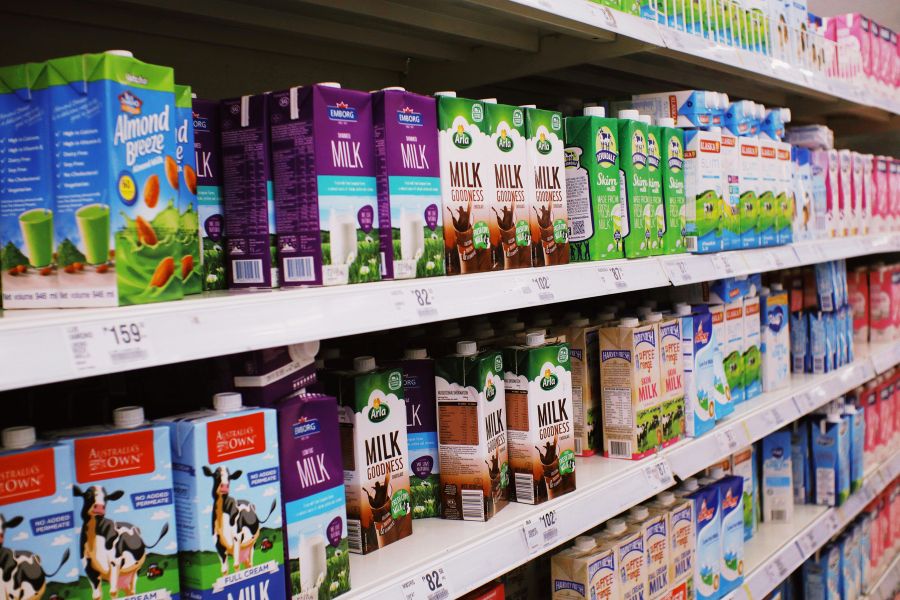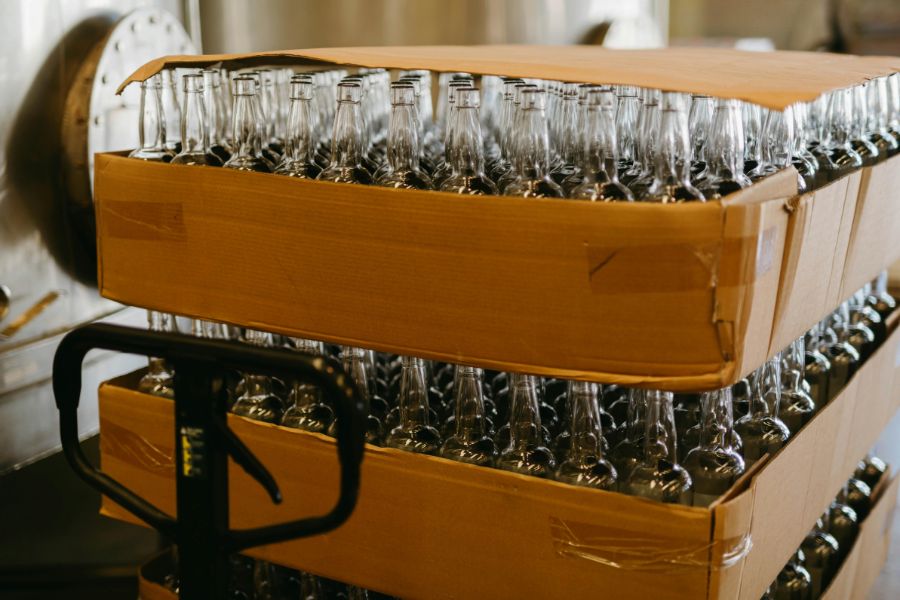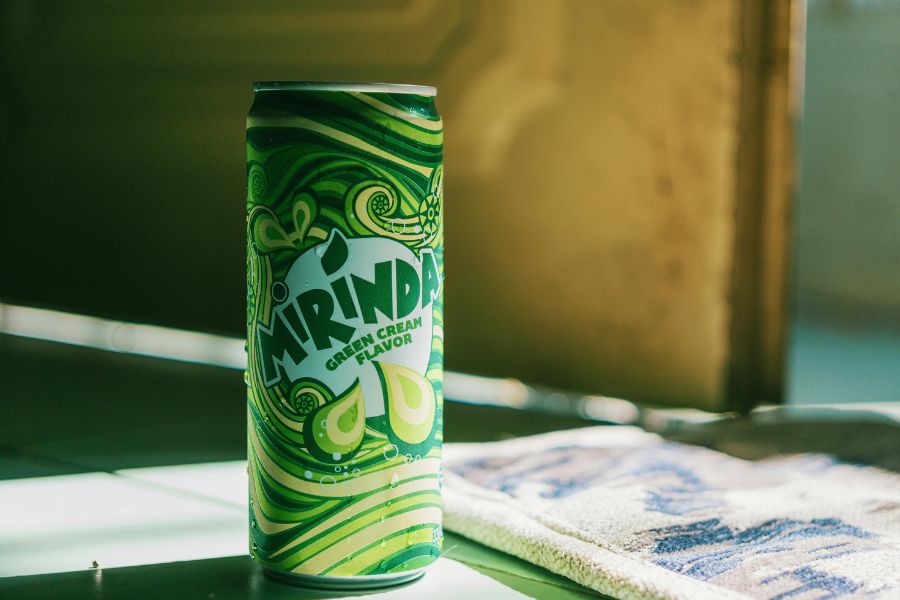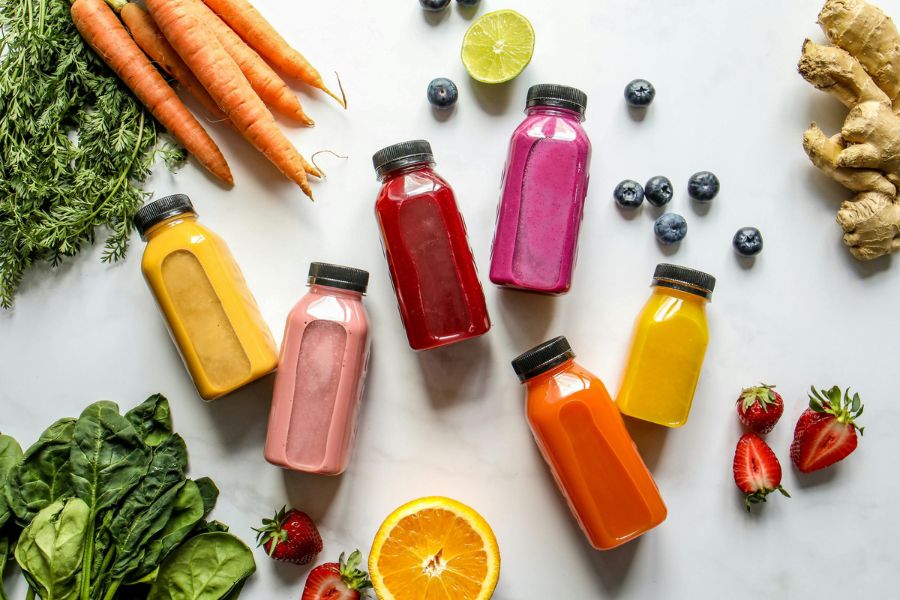Your Guide to Beverage Packaging
In today’s competitive business landscape, beverage packaging plays an important role in attracting and retaining customers. It serves as a tangible representation of your brand, influencing consumer perception and purchasing decisions. However, beverage packaging involves more than aesthetics; it encompasses material selection, regulatory compliance, and environmental considerations.
In this article, we will explore the importance of beverage packaging for businesses and provide practical tips on making responsible design decisions that enhance the customer experience without compromising your brand’s integrity.

Why Beverage Packaging Is More Than Just a Container
Beverage packaging protects drinks from the outside elements, but it’s far more than just a storage container. Consumers rely on packaging to understand the brand they’re choosing and the ingredients they’re putting in their bodies.
Businesses choose packaging for their beverage products that aligns with their ethos and will protect their product throughout the supply chain and distribution process. Ideally, you want your customers to feel confident in your product and a connection to your business’s larger mission.
Materials Used in Drink Packaging
Below, we’ll look at the best materials for beverage packaging and how their unique qualities can help you decide on the best option for you.
Aluminum: Lightweight and Recyclable
One of the most recycled metals in the world, aluminum beverage cans are lightweight enough for people to carry in bulk and still strong enough to stand up to carbonated pressure. Beverage manufacturers have been turning to aluminum as a popular alternative to plastic for beverage packaging thanks to its easy recyclability.
Glass: Premium Quality and Sustainability
Glass is a premium beverage material, instantly elevating your brand for a sophisticated look. It’s also nonporous, meaning your beverage tastes precisely how you intended. Glass beverage bottles are an ideal choice for coffee, juice, and beer, which have very specific flavor profiles that can be affected by other materials. Like aluminum, glass is a sustainable and easily recycled material. Whether your beverage packaging is headed to a coffee shop, a brewery, or a standard supermarket shelf, the visual appeal of a glass bottle can help your beverage products stand out amongst the competition.
Plastics (PET): Versatility and Cost-Efficiency
Shatterproof and heat-resistant, polyethylene terephthalate (PET) is a 100% recyclable material. It’s also lightweight and cost-efficient to produce, which can help you save money if working with heavy volumes. Plastic protects against moisture, oils, and gasses, and it’s customizable based on your brand. PET is the most commonly recycled plastic, and PCR (post consumer resin) can be used in a wide range of products.
Paperboard: Eco-Friendly and Customizable
Paperboard is an eco-friendly and customizable packaging material for beverages that attracts both brands and environmentally-conscious consumers. Primarily derived from renewable wood fibers, paperboard is recyclable and biodegradable, offering a more sustainable alternative to plastic bottles and aluminum cans. It allows for unique design and branding opportunities and is compatible with various finishes and shapes.
Paperboard packaging is an innovative solution that preserves the integrity of beverages such as juices, dairy, and plant-based drinks, offering convenience without compromising environmental impact.

Types of Beverage Containers
The right beverage container depends on your customer’s expectations, product requirements, and overall branding values. We’ll look at the different types of beverage containers, how they impact the drinks inside, and how they come across to consumers.
Cans
For the most part, cans refer to aluminum cans, though some companies choose tin-coated steel for beverages. Cans are not only highly recognizable as beverage containers, but they’re also easy to drink from. The main downside is that once the can is opened, it’s not meant to be closed again, which can be inconvenient for the consumer.
Bottles
Glass or plastic bottles or jugs are easily resealable for on-the-go or bulk packaging. Plus, some people prefer drinking from bottles for convenience. Glass is particularly desirable because it is known for preserving the beverage’s flavor and freshness, which might make it a better option for brand owners selling premium products.
Cartons
Cartons, such as Tetra Pak packaging or dairy containers with a spout for easy dispensing and reclosing, are popular choices for specific types of consumable products. Cartons are made from paper and are considered to be more environmentally friendly than plastic. However, this type of packaging consists of mixed materials and usually has a lining inside so it’s important to check with your local municipality on the recyclability of the product or if it needs to be disposed of in an industrial composting facility.
Pouches and Bags
Pouches and bags are often associated with children, though they’ve become more popular across age demographics over the past few years. Resealable and easy to pour, they’re great for athletes who need to refuel or for social events where glass is prohibited. Pouches can also be used for viscous mixtures, such as applesauce.

Sustainable Options for Beverage Packaging
According to scientists at the University of South Hampton, the top sustainable options for beverage packaging include:
- Glass bottles: Glass can be recycled indefinitely, and it’s also a key ingredient for renewable energy appliances like solar panels. The downside is that extracting raw materials for glass, like silica sand, can release harmful pollutants into the air.
- Recycled glass: Recycled glass is a better choice for sustainability as, again, it can be recycled indefinitely. The downside is that recycling glass requires high heat which takes up additional fossil fuels.
- Plastic: Plastic requires lower heat to melt than glass, and a recycled bottle or cap can be recycled up to three times before it loses its structural integrity. The lower heat releases fewer fossil fuels, though its limited lifespan does impact its sustainability.
- Aluminum: Like glass, aluminum can be recycled indefinitely. Plus, it requires far fewer natural resources to produce. The downside of aluminum, especially when produced in developing countries, is that the ore and minerals needed to make the material can end up polluting public water sources.
- Recycled aluminum: Recycling an aluminum can consumes far less energy than a new can and requires no additional mineral mining or transportation. Plus, US consumers are usually good at making the effort to recycle, with about 66% of all aluminum cans landing in the right bin.
- Paper: Paper or cardboard boxes can be recycled up to 5 times and can be produced in sustainable farms. Once the paper has reached the end of its recyclable lifespan, it’s biodegradable.

Food and Drink Compliance Regulations
The FDA regulates food and drink labeling and safety in the US. Below, we’ll look at which compliance measures you need to know and how you can satisfy all requirements while enhancing the customer’s experience.
Labeling Requirements
The FDA requires beverages in the United States to list certain facts about the contents. Use this brief rundown to get an idea of how your label should look:
- Allergens: There are eight major allergens that the FDA acknowledges: fish, shellfish, milk, eggs, tree nuts, peanuts, eggs, wheat, and soybeans. While you’re unlikely to have many of these in your beverage, they may be processed in a facility that contains a major allergen.
- Nutrition information: Serving size, calories, fat, cholesterol, sodium, carbs, and vitamins/minerals should be included to help consumers make better nutritional decisions. If you’re selling alcoholic beverages, like wine or bottled cocktails, you must list the alcohol content and include a health warning.
- Ingredients: Ingredients are listed in descending order by weight. You’ll need to provide a complete list of all ingredients to maintain compliance.
Material Safety
Material safety compliance is fairly straightforward. All beverage containers must be made with food-grade packaging under sanitary conditions, and all contents must be protected from potential contaminants.
Environmental Regulations
Environmental regulations refer to both pollution and energy consumption, and they vary based on what materials you work with and where you manufacture beverages. As a general rule, you’ll need to limit the discharge of toxic chemicals, establish efficient waste management, and reduce the amount of fossil fuels needed to produce your beverage packaging.

Key Considerations when Choosing a Beverage Packaging
When it comes to selecting the best beverage packaging for your brand, there are several factors to take into account. Each packaging option has advantages and disadvantages. Your choice should align with your brand’s identity and the preferences of your target audience. Let’s look at some key considerations to help you optimize your beverage packaging and make informed decisions.
Product Type: Matching Packaging to Beverage Needs
Each product has its own unique needs. For example, highly carbonated soft drinks typically fare better in aluminum or glass because it can withstand the pressure of the carbonation. If you’re selling a vibrant-colored drink, such as a sports drink or juice, you may want to choose plastic beverage bottles for maximum visibility.
No matter what type of beverage you’re selling, packaging consultants will tell you that it’s important to consider how it’s presented, how it will likely be consumed, and who will be consuming it.
Brand Identity: Reflecting Your Brand in Your Packaging
The packaging of your product should align with its unique benefits and fit your demographic whether your branding is bold or more subtle. For instance, if you have big, bold flavors, you might reflect that through bright colors. If you’re selling a health-conscious product such as fresh juice, you may opt for natural elements in your labeling design and bottle choice. A custom bottle design option is another option if you’re looking for a packaging option that is entirely unique.
Cost Considerations: Balancing Budget and Quality
Many of the most popular beverage containers are chosen because of their overall value. Aluminum is both durable and affordable, which is why many beverage suppliers choose it over glass or plastic. Glass can give your product a more sophisticated edge, but it’s not always worth the additional costs.
Another thing to keep in mind is scalability. Purchasing in bulk is a huge benefit for beverage brands. Even if you start with marketing in small batches, consider how your packaging needs will change as you grow and expand.
Consumer Preferences: Aligning with Market Trends
You likely already have an idea of what consumers look for when purchasing beverages. Most people assume they’ll find 12 ounces of soda in an aluminum can and 16 ounces of soda in a plastic bottle. If consumers are willing to pay for a premium beverage, they likely expect to find it in a container that reflects the premium experience.
Whether your consumer is motivated by healthy ingredients, value, unique flavors, or something else, it’s important to single out their reasons for choosing your product. From there, you can better decide what type of packaging aligns with your ultimate goal. Considering market trends as industry regulations roll out and sustainability laws fall into place, it’s important to stay ahead of these rules and regulations. This is not only to avoid penalties for noncompliance but also to build trust and show your customers that you are adaptable to changing times.

From Concept to Reality: How to Find the Right Beverage Packaging Partner
In today’s competitive market, choosing the right beverage packaging is essential for your product to stand out. At Paramount Global, we’ve been simplifying packaging and optimizing supply chain solutions for businesses like yours since 1976. As experts in this field, we offer attractive and versatile wholesale packaging options tailored to your needs. From sourcing packaging solutions to inventory and supplier management, we are here to help. Contact us today to discover how we can partner with you to streamline your packaging and supply chain processes.
Hayley is a marketing professional and copywriter with a background in crafting content for a diverse range of industries. She has been writing about packaging and supply chain logistics for Paramount Global since 2022. She specializes in explaining complex topics in a clear and engaging way and is an advocate for sustainability in packaging and supply chain management.
For over forty years, Paramount has been delivering perfectly integrated packaging and supply chain solutions.
